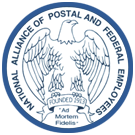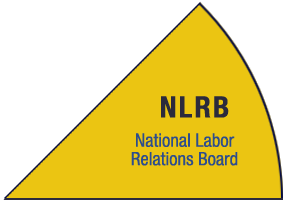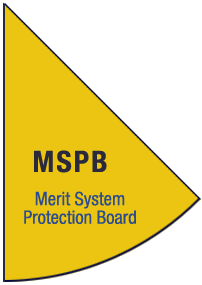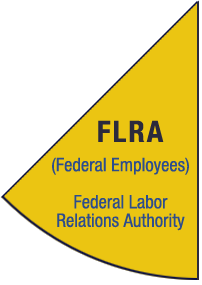Welcome To NAPFE
The National Alliance of Postal and Federal Employees welcomes you to its Website.
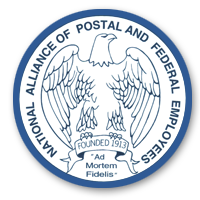
The National Alliance of Postal and Federal Employees is an independent labor Union that is composed of three tiers: the National – headquartered in Washington, District of Columbia; Nine Districts – with a division of the fifty states, the U. S. Virgin Islands and Puerto Rico; and various Locals – located within the fifty states, U. S. Virgin Islands, and Puerto Rico.
This is your Union and your participation will contribute to the greatness of the National Alliance.
It is true that being Federal employees, strikes and lockouts are beyond the realm of our personal experiences. It is also true that we have much in common with people in non-federal employees union's because we are a significant part of American Labor. This is why it is important to understand the philosophy and the history of the movement not only of the Alliance but of trade unionism in general.
The steward is your union representative right on the job. He or she is elected directly by the members in your job unit, or is appointed as provided by Local by-laws. Stewards are your contact point for information about the union and its activities. They handle grievances as they arise, accepting them from the members and seeking to adjust them with first-line supervision. They refer unsettled grievances to the proper Local Officer, so that they may be processed according to the grievance procedure.
If your seniority rights have been ignored, if you have been unjustly discharged, if you have improperly been denied a promotion to a better job, or if you have any other grievance, see your Alliance steward without delay.
In the spirit of genuine helpfulness, the N.A.P.F.E. offers these friendly words of advice. Learn as much as possible as quickly as possible about your duties as an employee. Inquire whenever necessary of the proper authority about those matters concerning your employment with which you are unfamiliar.
Pay particular attention to all instructions. Obey all orders promptly. Avoid any semblance of an altercation or dispute with your fellow or supervisory employees. Now, if you do have difficulty, which means friction, remember there is a right way and a wrong way to deal with it. If you protest verbally on the spot, do it with courtesy and firmness. If in doubt as to either the method or result, consult the Labor Relations Officer of your local of the National Alliance of Postal and federal Employees.
Punctuality is a must. When you are scheduled to work, you are most definitely expected to show up. Only a good reason that will bear inspection can relieve you of these obligations. If you can't show up, phone in early, so other arrangements can be made. If you like the service and are proud of it, this will be reflected in your good conduct both on the job and in the street.
In other words be efficient, well informed, courteous and punctual. In this way, your value as a federal employee will be enhanced.
And, last but not least, be an active member in the Alliance. Share your ideas about the advantages of belonging to your Union with new employees and other people you meet at work. The National Alliance needs you and your ideas.
Categories of Membership
Regular Members
Persons paying full membership dues, holds membership in a Local and are entitled to actively participate in all Union functions.
Honorary Members
The National and each District, by majority vote in convention, and each local by a majority vote in a regular membership meeting may elect persons of distinction to honorary membership. Such membership carries no right to vote, hold office or to participate in this organization's affairs.
Members at Large
Person employed in an installation where a Local has not been established. Representation is provided by the National Office designee (Members at large are afforded the right to vote in national elections. However, they may not hold an office or serve as a delegate).
Retired Members
Any regular member retaining "Regular Membership" status for a minimum of five (5) years, retiring from employment, and pays the required dues and assessments to the Local, District, and National. Retired members are entitled to all rights and privileges afforded to regular members.
Life Member
Any person who has been a member of the Alliance for forty (40) years or more, shall receive a dues exempt Life Membership.
Retiree-at-Large
Person meeting all the requirements of the "Retired Member", whose residence has changed to an area where a Local has not been established or the Local is inactive.
Auxiliary Members
Persons who are relatives of NAPFE members are eligible to join the Auxiliary and serve as officers and delegates at the Local, District and National levels.
Youth Council Member
Persons between the ages of eight (8) and eighteen (18), who are dependents of NAPFE members, are eligible to join the Youth Council and serve as officers and delegates at the Local, District and National levels.
Management Division Member
NAPFE members holding a supervisory position in the Postal or Federal Service, are eligible to join the Management Division and serve as officers and delegates at the Local, District and National levels.
Membership Information

Eligibility Information
All postal or federal employees may make application for membership in this organization. Each member of the Alliance must belong to the local in the postal or federal installation where he or she is employed. At installations where no local has been established, employees shall belong to the nearest local within their district, except that present members-at-large may remain as such.
Membership Divisions
- The Retirees' division is composed of members who are retired or meet the qualifications described in Article III, Section 4f. of the Constitution.
- The Management Division is composed of members who hold supervisory positions.
History of NAPFE
Hazardous working conditions, discrimination, self determination and the need for job protection were the key elements for the establishment of the National Alliance of Postal Employees in 1913 by 35 black railway mail clerks who met at the foot of Lookout Mountain in Chattanooga, Tennessee to form a union for the immediate purpose of preventing the elimination of blacks from the railway mail service. At the time of the National Alliance's founding, the practices and policies of the existing craft unions excluded blacks from their membership. This attitude persisted well into the sixties. Since its October 6, 1913 founding, the Alliance, which was the first industrial union in the federal service, has kept its doors open to all eligible persons regardless of race, sex, creed or religion-- a factor which distinguishes NAPFE from the old line craft unions in the postal and federal service.
The sequence of events which led to the creation of the National Alliance in 1913 and its subsequent growth over the ensuing years constitutes a provocative and exciting segment in the history of the labor movement in general and the black struggle for equality in particular. Hazardous working conditions, discrimination, militancy, self determination and a desire for equal employment opportunity are key elements in the dramatic story of this Union.
It begins in the late 1890's and early 1900's when the Railway Mail Service was the most important phase of the postal service outside the area of first-class post offices. Nearly every railroad which passed through or near sizable towns had a mail car. The clerk in the mail car was responsible for receiving and dispatching mail in accordance with official schemes, schedules and special instructions. A great majority of the railway mail clerks were black. The Railway Mail Service was operating with dangerous wooden cars which guaranteed casualty in train wrecks. As a result, competition for the hazardous positions was slight and blacks were more readily hired as railway clerks until the railways conversion from wooden to steel railway cars in 1913.
With the advent of steel cars, a concerted effort was made to eliminate black railway mail workers. Since the Railway Mail Association excluded blacks from its membership, black workers did not have the benefit of an industrial organization to appeal to for their defense. This was the situation facing black workers when a call went out to black railway mail clerks in August 1913 to convene in Tennessee in October for the purpose of joining forces to combat the discrimination they were encountering.
Thirteen states were represented at that first meeting on October 2, 1913 at the foot of Lookout Mountain in Chattanooga, Tennessee when the National Alliance of Postal Employees was founded. The major concerns of that founding meeting were: to provide a beneficiary department and an insurance department to enable black railway clerks to make suitable provisions for their families; to launch a national journal dedicated to the interests of black railway mail clerks; and to establish means to effectively present their grievances and petitions to the Post Office Department.
In 1923, the National Alliance became the first industrial Union in the United States when it opened its membership to any postal employee who desired to join.
Although the Union was organized for the immediate purpose of preventing the elimination of blacks from the railway mail service, the Alliance has kept its doors open to all eligible persons regardless of race, sex, creed or religion - a factor which distinguishes the Alliance from the practices and policies of the old line craft unions in the postal and federal service.
Despite the predictions of failure, the Alliance has grown steadily. Its growth can be attributed to the reputation it has earned in the effective representation of its members in grievance, adverse action and equal employment opportunity cases throughout its history.
It was the Alliance along with other organizations who protested the use of photographs for identification for civil service examinations as early as 1914. The Alliance recognized that photographs could be used as a racial discrimination tool and continued its protest until the elimination of this practice 26 years later.
NAPFE Organizational Structure
Our Organization
- A supreme national body which is governed by an Executive Board between conventions.
- Nine intermediate bodies named Districts
- Local bodies called Locals
The National Alliance is a union of people who serve the Nation as rank and file employees in the federal and or postal service. The motto of the Alliance "Ad Mortem Fidelis" (Faithful unto Death) is fulfilled by the Union in all its activities for its members.




